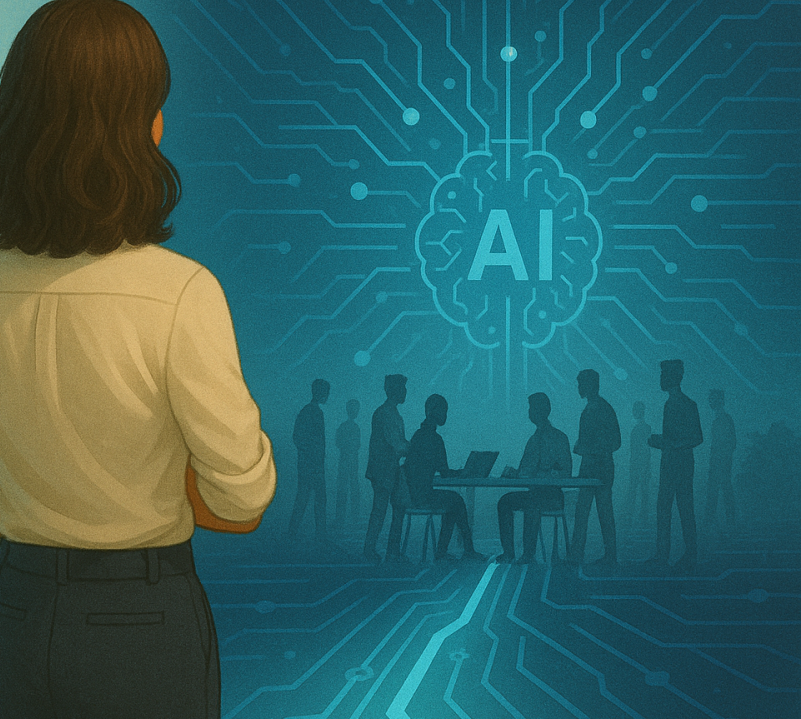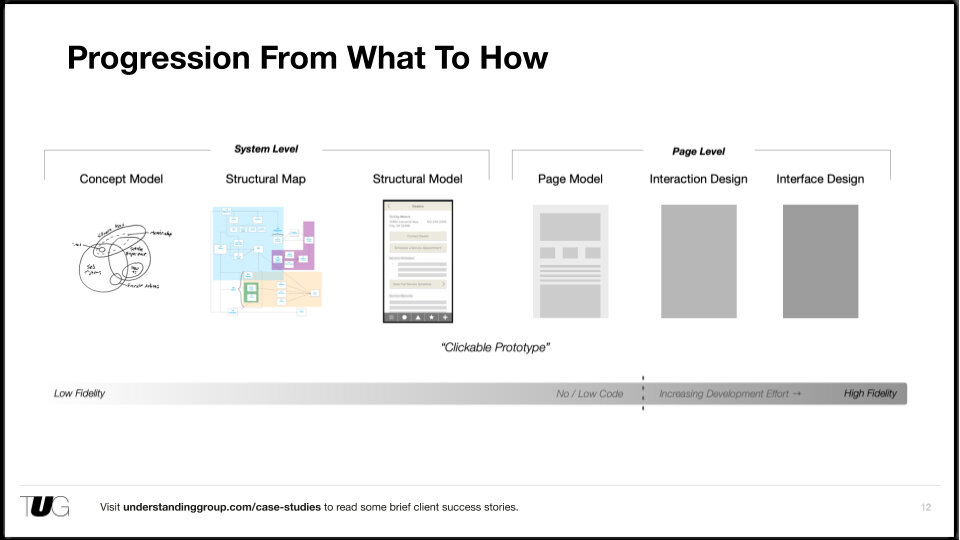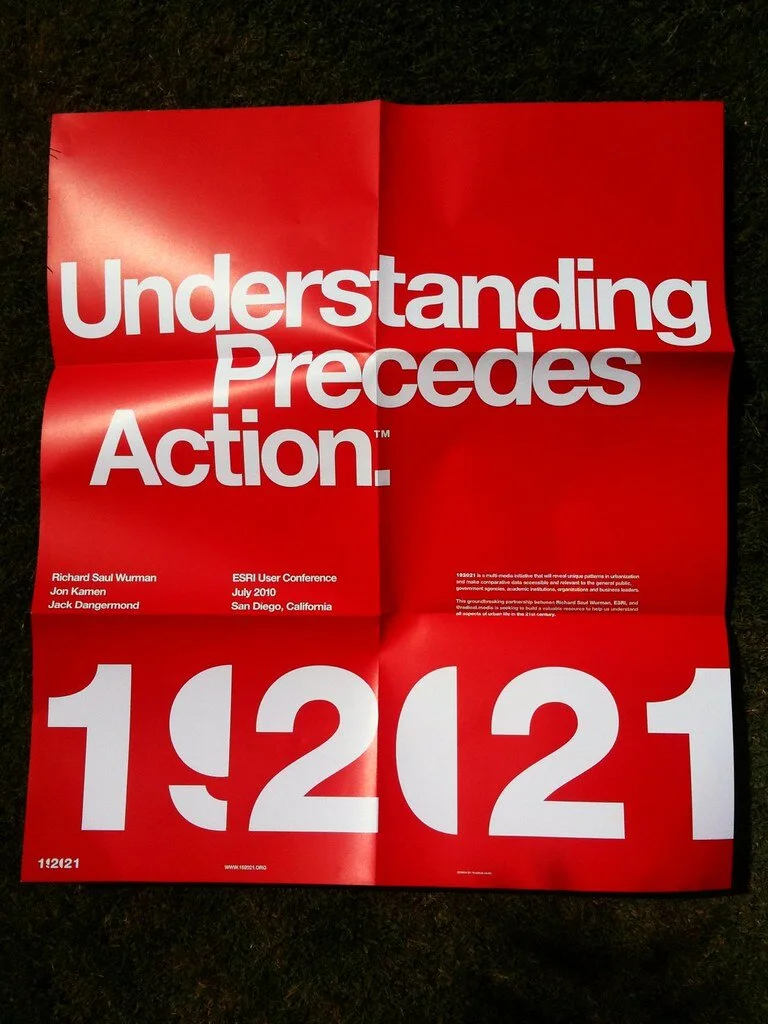IA Practice + Theory
Articles and ideas about information architecture from our staff
“The architect should be equipped with knowledge of many branches of study and varied kinds of learning, for it is by his judgement that all work done by the other arts is put to the test. This knowledge is the child of practice and theory.”
IA Practice
The continuous and regular exercise of employment
The idea of a road map is pretty fuzzy. People typically see them as a project plan or a project charter, but we see them a little differently. For us, road maps are a tool that defines “what we are building, in what order, and what we need to build it”.
A truly good taxonomy DOES THINGS and is needed to DO THINGS. In other words, most taxonomies should be created for practical, specific use, like finding a book, describing a series of technical standards, or organizing an e-commerce clothing store.
We're going to share the three major steps for making useful taxonomies that help us map out the world. They are:
Be Necessary and Sufficient
Have a Purpose
Plan for Change.
In our recent experiment with our In/Tension Modeling workshop, TUG introduced an innovative approach by incorporating toy wooden blocks, transforming the traditional alignment sessions into more engaging and interactive experiences. This method significantly increased participation and enriched discussions, allowing stakeholders to visualize strategic tensions and outcomes more effectively. The experiment underscores the importance of integrating fun and playful elements into workshops to foster creativity, collaboration, and a deeper understanding among participants, offering valuable insights to enhance any workshop session.
This article, written by Emily Claflin, emphasizes the importance of plain language in information architecture. Plain language, promoted by the US government's Plain Writing Act in 2010, simplifies communication, making information easily understandable. It's particularly valuable in information architecture, where it aids in understanding complex information. The article outlines the US Government's eight guidelines for plain language, including audience-focused writing, organization, word choice, conciseness, conversational tone, design, web standards, and assumption testing. Ritter provides tips for incorporating plain language into writing and concludes that its use benefits everyone by saving time, reducing errors, and improving communication.
Dan has a “big picture” view of Information Architecture. Information Architecture – all architecture, really – is about making the places we create good. A “Good” structure can manage the forces acting on it, be it rain, sun, heat, or cold. Achieving “good fit” between a structural form and the many forces in the environment is the role of architects and architecture.
This is true whether you are building a house or a web application! The forces a website faces are vastly different than those of a house, but they have just as much of an impact as rain does on a roof, and getting good fits is just as important.
This course will teach you how to realize that fit in your information projects.
Daniel O’Neil at The Understanding Group talks about the magic of good product managers. Good PMs are most effective when they think like architects. Architecture is best when it uses blueprints and blueprints are different from requirements. Not all product managers know how to make blueprints, but they love to use them and they achieve great success for their team when they have them. Find out ways you can set your PMs up for success!
The first thing to do to tackle conceptual debt is to create a modeling culture, especially among your strategic thinkers and planners. The approach is profoundly powerful, but requires courage to embrace. Courage is vital! because when we go deeper in the understanding of things, we discover competing needs, politics, and hidden assumptions. As Einar Hørst puts it, “technical work is puzzle solving, whereas modeling work reveals tensions.”
Modeling is a practice that leads to understanding. In this second challenge, our TUG associates were invited to create a model centered around their libraries or relationships with/to books.
Creating models is a practice that leads to understanding. So, each week we do just that, practice modeling. The week starts off with a fairly open-ended “model prompt” that all TUG associates are invited to use to create a model. Then, on Fridays we get together for an hour to both critique and explain our models to one another in the hopes of mutual growth in this vital skill. It’s fun and we’re having a good time with it. There are so many options when modeling and we thought it’d be fun to show how different and creative they can be. This week’s challenge is to communicate information about the sources of light within one’s home.
Technical Debt (“the code is broken, here’s a fix”) is mostly understood and acknowledged while Conceptual Debt (“why’d it happen? what areas are impacted? Are we in alignment on what good is?”) goes largely unacknowledged. That is, until the discord around your software/app/website/etc seems insurmountable.
Conceptual debt occurs when an organization makes bad design choices from adopted models that don’t align with the business and customer needs. This kind of debt is not easily recognized and is prevalent in most teams lacking a solid digital strategy. While technical debt gets all the press, conceptual debt is the undetected metaphorical hammer that is coming for digital places (software, app, intranet, etc).
Misalignment from stakeholders creates not only differing ideas about structure but also the languages within them. Without proper alignment from the beginning of a project, it’s destined to fail. Understanding must precede action. Clarity at the beginning of a project is attained through stakeholder alignment, strategy, and roadmapping. In/Tension Modeling is one tool that we’ve created and use so that we can discover both the business intent and tensions that exist regarding the website, product, intranet, app, etc.
See the index of all our IA Practice articles→
IA Theory
The ability to demonstrate and explain the principles
Leaders today are challenged by the rapidly increasing complexity of their world. Many grasp the power of AI to transform how value is created and delivered, but also see the risks of another new technology and feel a weight of responsibility to their mission, the people they serve and their overworked teams.
Why it matters: AI is transformational, and trying to keep up with its growing capabilities will make your head spin. But the relentless hype is a distraction. You don’t need to be a technology expert to lead your team through this transformation successfully. Instead, you need to anchor your strategy in the human wisdom that already drives your organization.
Our comprehensive Aligned Groups Framework fosters agency by focusing on three key imperatives: cultivating human agency, communicating holistically, and reflecting on whole creative processes. This structured approach to AI Ethics builds good governance and management processes that give your teams confidence they are leveraging AI in ethically consistent ways.
The successful implementation of artificial intelligence in any organization requires more than just technology - it also needs a vibrant, diverse community working with shared purpose.
Value can’t be assumed, the user experience wins are not enough. Organizations have the right to define and map their needs in the context of how the organization exists and succeed. Digital ecosystems are increasingly a core factor in that, so of course their value is an important question and people who have broader needs are asking it.
OTC (Ontology—Topology—Choreography) doesn’t explain Information Architecture. Rather, it explains how the things we address when we work on an information architecture get their thingness: through involvement in human inhabitation of places (choreography), by way of their being situated in inhabited environments (topology), and on account their belonging within a nexus of afforded and appropriate uses (ontology).
Large Language Models put the power of natural language processing in the reach of everyone, but with great power comes great responsibility — which makes this guest lecture by Andrea Resmini at Dan Klyn’s information architecture class at the U-M School of Information all the more important. There is no “universal” way to classify something. It is essential that humans curate and steward the classifications made by AI.
It is no longer enough to simply get a digital project past the finish line! They must also deliver a satisfying outcome. So while the biggest failure of past projects was a failure of SCOPE, today’s failures are about ALIGNMENT – that is, ensuring that the project outcomes reflect the needs and expectations of those who commissioned its creation. This article talks about how conceptual models help align teams so that they can produce delightful, successful products.
Daniel Heck, TUG’s AI Ethicist, discusses the critical role of integrating artificial intelligence into higher education and its importance in setting the standard for how to do so ethically. Drawing on his insights from the recent Counselors to Higher Education Summit in Nashville, Daniel emphasizes the importance of authenticity, human agency, and building trust as cornerstones to integrating Artificial Intelligence into our work. Challenges and opportunities certainly exist when leveraging AI to enhance educational experiences. The focus, however, should be on leveraging AI to augment and enhance human understanding and interaction rather than to replace these human elements.
There has been a lot of attention paid to the ethical application of AI technologies in society, and rightly so. Machines can only judge based on the way they’ve been trained, and there are too many examples where this has been done poorly to ignore. Guidelines, even regulatory laws, are an immediate necessity, and every company harnessing AI must vigilantly plan to protect against abusive applications of this powerful technology.
This month we asked the TUG team to summarize their time at the Information Architecture Conference (IAC) and share the most impactful sessions for them. The team definitely had a few thoughts they brought home with them, and we’re happy to share those with you this month. Our hope is that if you could not attend, you could see the conference through their eyes and what made them think.
Early in my career, a housemate told me about his adventures teaching a robot arm to build a tower of blocks using an AI framework for developing systems that exhibit intelligent behavior. Define a block. Define a tower of blocks. Find the block. Pick the block up. Place the block. Place another block, and so on to make a tower. Oh wait, the arm doesn't know about gravity so it tries to start at the top and work downward. Teach the arm about gravity. Oh, that is a glass table top, so learn to start there instead of crashing through to start on the ground. And so on.
TUG helps organizations get better alignment on the vision of the software they want to create. In the built world, this is achieved through PLANNING that produces MODELS - representations of a place that can be used to scope out the engineering and crafting tasks needed to create the thing the design describes. The Understanding Group relies on models to get broad clarity as well, although in the case of software, it’s not a single model or specification, but multiple models.
All software development operates from some initial vision that is expressed through varying kinds of specifications. Whether these are traditional waterfall requirements, user stories in a backlog, or a checklist, they all represent an attempt of human minds to express to builders a need. And most of them, in one way or another, largely fail to do so.
TUG argues that the failure to produce novel products that match an initial vision is caused by a disconnect between the intent of the organization and the development teams trying to realize it.
New problems in business — especially in internet-heavy contexts, where the concepts involved are changing at massive speeds — are the kinds of problem sets that demand rigor. Rigor is a way to validate, verify, and align understanding of complex concepts. Only after the "what" is developed and the "how" begins to come up during design and creation should formal models get in the driver's seat.
See the index of all our IA Theory articles →
And check out TUG Talks
TUG Co-founder Bob Royce talks about TUG's PASS Process, a framework for doing good information architecture that TUG uses throughout its projects.
Audio and slides from the opening keynote presentation TUG co-founder Dan Klyn was invited to give at the 2015 Italian IA Summit in Bologna, Italy.
Dan Klyn follows up his talk on UX Radio with a conversation about structural form, what "good" means, and how meaning and structure can be inter-related.
A trans-coded gem from the VHS library at the University of Michigan school of Art & Architecture. Christopher Alexander gives a 3-part talk to object-oriented programming enthusiasts in Southern California back in 1996, and the perspectives he lends on generating living structures and making things be good are an inspiration to our work at The Understanding Group. We hope it inspires you too.
Jessica DuVerneay shares her reflections:
Almost a week later, and I’m still exhausted from the Information Architecture Summit 2014 in San Diego. And I mean that in a good way, in a GREAT way. After hosting a workshop, attending four keynotes, attending near 15 amazing talks, having an innumerable amount of wonderful and challenging conversations with great IA minds, (and somehow managing to eat, sleep, and be a human in there, too) I’m wiped, in the best way possible.
Andrew Hinton provides his slides and speaker notes for a presentation on information environments he gave in 2014 Convey UX in Seattle.
See more TUG Talks →

































Travis delves into the integration of Service Design principles into Information Architecture practices, emphasizing the importance of understanding organizational needs and overcoming departmental barriers. Service Blueprints emerge as a pivotal tool, expanding on customer journey flows to include organizational actions, both visible and behind-the-scenes. However, the article also raises concerns about the potential misuse of such blueprints as mere buzzwords without grasping their true essence. Drawing inspiration from Lou Downe's "Good Services," the piece underscores the significance of clear intent, user-centric design principles, and the need for sustainable governance. The overarching message is the continuous evolution and adaptability of service design, emphasizing collaboration, feedback, and preparedness for inevitable service failures.